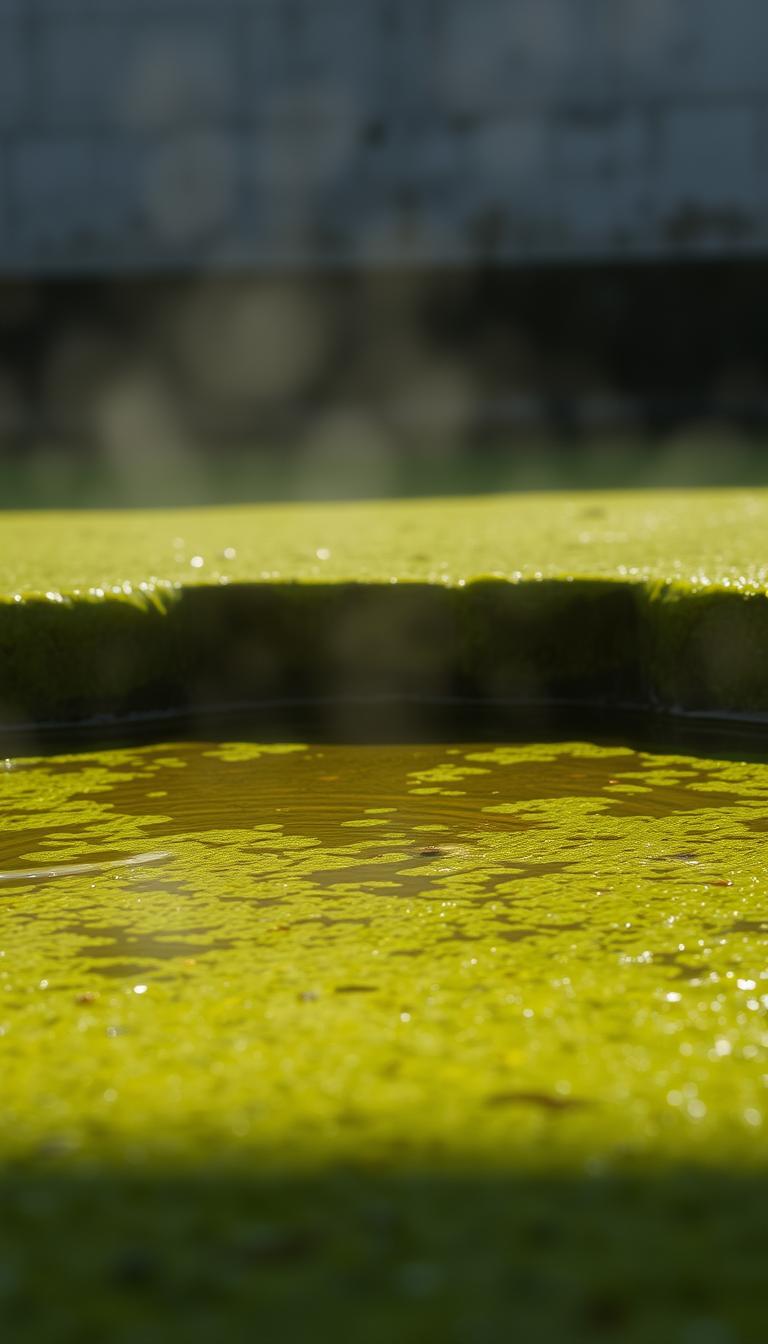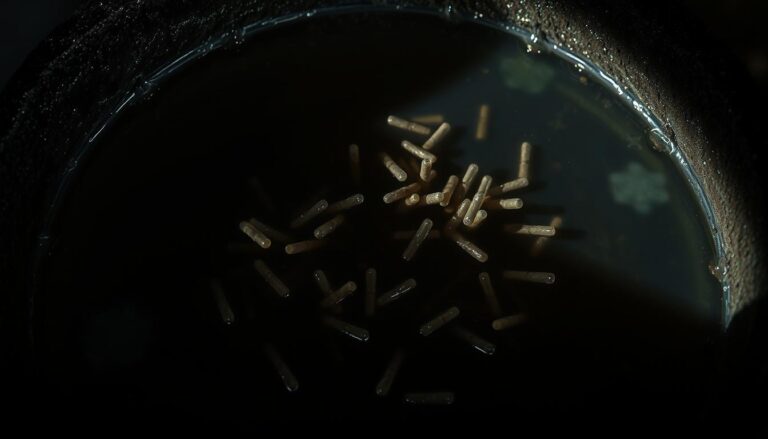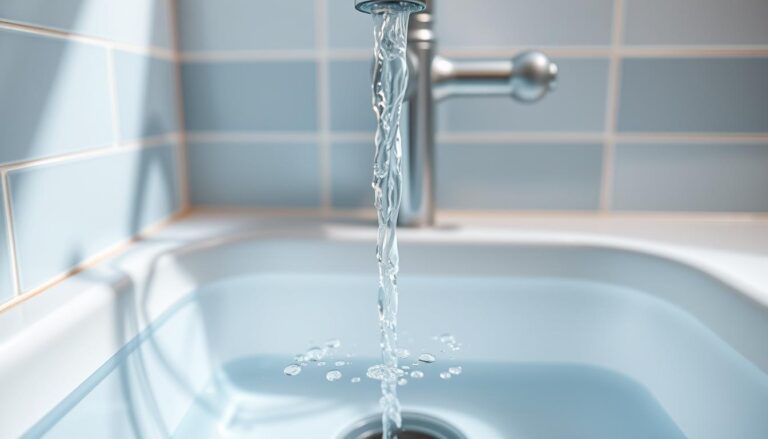What Are Coliform Bacteria?
Coliform bacteria are a group of microorganisms commonly used to indicate the sanitary quality of water, food, and milk. They are defined as Gram-negative, non-spore forming bacilli that can produce acids and gases at their optimal growth temperature of 35–37°C.
These bacteria are often found in the environment, including in soil, water, and the gastrointestinal tracts of animals. According to the New York State Department of Health, coliforms are used as “indicator” organisms because their presence can signal the potential presence of pathogens in water.
The presence of coliform bacteria in drinking water may indicate contamination, highlighting the need for further testing to ensure water safety.
Key Takeaways
- Coliform bacteria are indicators of water quality.
- They are Gram-negative, non-spore forming bacilli.
- Their presence can signal potential contamination.
- Coliforms are found in the environment and in animal gastrointestinal tracts.
- Further testing is required if coliform bacteria are detected in drinking water.
Understanding Coliform Bacteria
Understanding coliform bacteria is crucial for assessing water quality and environmental health. Coliform bacteria are a group of microorganisms that are commonly found in various environments, including soil, water, and the digestive tracts of animals.
Definition and Basic Characteristics
Coliform bacteria are defined as Gram-negative, rod-shaped bacteria that are capable of fermenting lactose. They are typically non-pathogenic, but their presence is used as an indicator of potential contamination. Some key characteristics of coliform bacteria include:
- They are aerobic or facultative anaerobes, meaning they can survive in both oxygen-rich and oxygen-poor environments.
- They are typically found in the digestive tracts of animals and humans.
- They can be present in soil, vegetation, and water due to various environmental factors.
Role in the Environment
Coliform bacteria play a significant role in the environment, particularly in the decomposition process and as indicators of environmental health. They are involved in the breakdown of organic matter and can be found in various ecosystems, including:
- Soil, where they contribute to nutrient cycling.
- Water bodies, where their presence can indicate contamination.
- Plant material, where they are part of the natural flora.
By understanding the role and characteristics of coliform bacteria, we can better assess environmental health and identify potential sources of contamination.
Historical Context and Discovery
The discovery and subsequent research on coliform bacteria have played a pivotal role in shaping our understanding of waterborne pathogens. The presence of these bacteria is often used as an indicator of water quality and potential health risks.
Early Research on Water Contamination
Early studies on water contamination laid the groundwork for understanding the role of coliform bacteria in water safety. Researchers began to notice that certain bacteria were consistently present in contaminated water sources. The identification of these bacteria became crucial in assessing water quality.
As quoted by a renowned microbiologist,
“The presence of coliform bacteria in water is a significant indicator of potential contamination.”
This statement underscores the importance of coliform bacteria in water safety assessments.
Evolution of Coliform Testing
Over the years, the methods for testing coliform bacteria have evolved significantly. From basic culturing techniques to advanced molecular methods, the evolution of coliform testing has enhanced our ability to detect and quantify these bacteria in various water sources.
The importance of coliform bacteria testing cannot be overstated, as it provides critical information on the safety of drinking water and the potential presence of pathogens. Modern testing methods have made it possible to obtain accurate results quickly, enabling prompt action to be taken when contamination is detected.
Understanding the historical context and the advancements in coliform bacteria research is essential for appreciating the current standards and practices in water quality assessment. The continued evolution of testing methods will further enhance our ability to ensure safe drinking water.
Types of Coliform Bacteria
Coliform bacteria are broadly classified into total coliforms, fecal coliforms, and Escherichia coli (E. coli), each having different implications for water quality and public health.
Total Coliforms
Total coliforms include a wide range of bacteria that are found in soil, water influenced by surface water, and human or animal waste. The presence of total coliforms in water suggests that the water may have been contaminated with surface water or other sources.
Fecal Coliforms
Fecal coliforms are a subgroup of total coliforms that are specifically found in the gut and feces of warm-blooded animals. Their presence in water is a strong indication of fecal contamination.
Escherichia coli (E. coli)
E. coli is a type of fecal coliform bacteria that is commonly found in the intestines of humans and animals. While most strains are harmless, some can cause serious illness. The presence of E. coli in water is considered a definitive indicator of fecal contamination.
The different types of coliform bacteria and their presence or absence can be used to assess the level of contamination and potential health risks associated with water.
| Type of Coliform Bacteria | Characteristics | Implication |
|---|---|---|
| Total Coliforms | Found in soil, water, and human/animal waste | Indicates potential contamination |
| Fecal Coliforms | Specifically found in gut and feces of warm-blooded animals | Strong indication of fecal contamination |
| E. coli | Commonly found in intestines of humans and animals | Definitive indicator of fecal contamination |
Where Coliform Bacteria Are Found
Coliform bacteria are widespread, inhabiting various natural environments and being present in the feces of warm-blooded animals. Understanding where these bacteria are found is crucial for assessing water quality and potential health risks.
Natural Habitats
In natural settings, coliform bacteria are typically found in environments with organic matter. They are common in soil and on plants, contributing to the breakdown of organic materials. Their presence in aquatic environments can be influenced by factors such as water temperature, pH, and the availability of nutrients.
Human and Animal Sources
Coliform bacteria are universally present in large numbers in the feces of warm-blooded animals. This includes humans, livestock, and wildlife. Fecal matter can contaminate water sources through various means, such as runoff from agricultural areas or leaking septic systems.
Common Contamination Points
Several common points can lead to the contamination of water sources with coliform bacteria. These include:
- Agricultural runoff, especially from areas with livestock
- Leaking or poorly maintained septic systems
- Sewage overflows or treatment plant failures
- Urban runoff, which can carry contaminants from streets and buildings into waterways
Identifying and addressing these contamination points is crucial for maintaining water quality.
| Source | Description | Potential Impact |
|---|---|---|
| Agricultural Runoff | Runoff from farms and livestock areas | Contamination of nearby water bodies |
| Sewage Overflow | Overflow from sewage systems | Direct contamination of water sources |
| Urban Runoff | Runoff from urban areas | Contamination of waterways with various pollutants |
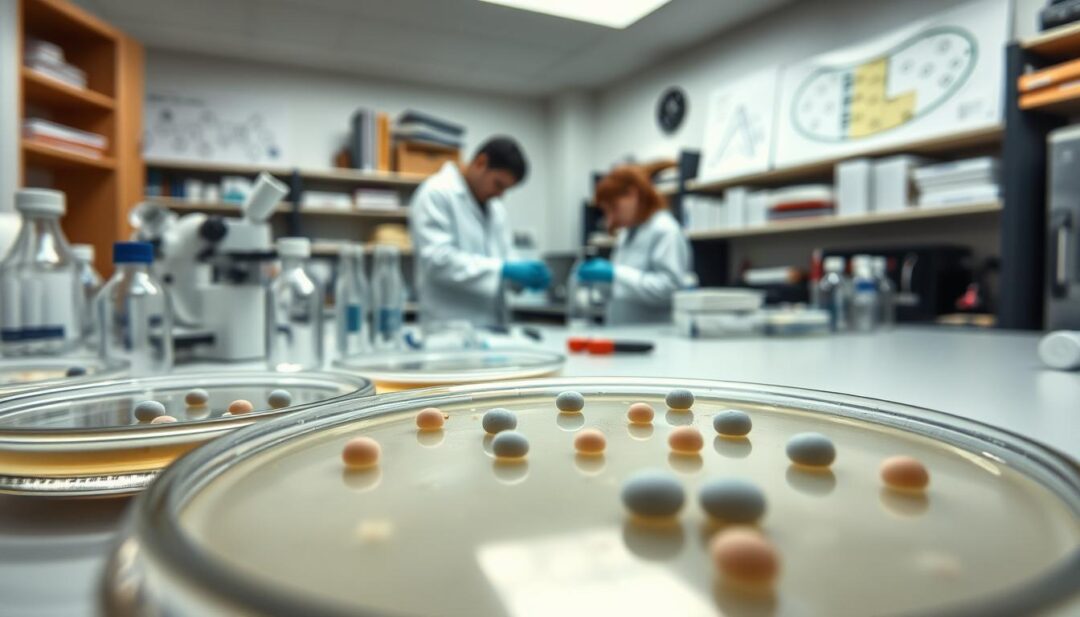
Coliform bacteria are found in a variety of environments, from natural settings to areas influenced by human and animal activities. Understanding these sources is key to managing water quality and mitigating potential health risks.
Coliform Bacteria in Water Systems
Water systems, including drinking water sources and recreational water bodies, are tested for coliform bacteria to ensure they are safe for use. The presence of these bacteria can indicate contamination and potential health risks.
Drinking Water Concerns
Drinking water contaminated with coliform bacteria poses significant health risks. Every drinking water source must be tested for the presence of these total coliform bacteria to ensure it is safe for consumption.
Testing for coliform bacteria is a standard practice in water quality management. It helps in identifying potential contamination sources, allowing for timely corrective actions.
Recreational Water Bodies
Recreational water bodies, such as lakes, rivers, and swimming pools, can also be contaminated with coliform bacteria. This contamination can lead to health issues for individuals who come into contact with the water.
The importance of coliform bacteria testing in these water bodies cannot be overstated, as it helps in assessing the safety of the water for recreational activities.
Impact on Aquatic Ecosystems
Coliform bacteria can also have an impact on aquatic ecosystems. High levels of these bacteria can indicate broader environmental issues, such as pollution from agricultural runoff or sewage.
| Water Type | Concerns | Testing Importance |
|---|---|---|
| Drinking Water | Health risks due to contamination | Ensures safety for consumption |
| Recreational Water | Health issues for users | Assesses safety for recreational use |
| Aquatic Ecosystems | Environmental pollution indicators | Helps in managing ecosystem health |
Understanding and managing coliform bacteria in water systems is crucial for maintaining public health and environmental quality. Regular testing and appropriate mitigation measures are key components of effective water quality management.
Health Risks Associated with Coliform Bacteria
While most coliform bacteria are not harmful, certain strains like E. coli 0157:H7 can lead to severe illnesses. The presence of these bacteria in water can indicate potential health risks, making it crucial to understand the associated dangers and how to mitigate them.
Potential Illnesses and Symptoms
Coliform bacteria, particularly certain strains of E. coli, can cause a range of illnesses, from mild gastrointestinal issues to life-threatening conditions. Symptoms may include diarrhea, abdominal cramps, and in severe cases, kidney failure. As noted by health experts, “The severity of the illness often depends on the strain of the bacteria and the individual’s health status.”
“The severity of the illness often depends on the strain of the bacteria and the individual’s health status.”
Vulnerable Populations
Certain groups are more susceptible to the adverse effects of coliform bacteria, including children, the elderly, and individuals with compromised immune systems. These populations should take extra precautions to avoid exposure to contaminated water.
- Children under the age of 5
- Elderly individuals
- People with weakened immune systems
When to Seek Medical Attention
If you experience symptoms such as severe diarrhea, bloody stools, or signs of dehydration after exposure to potentially contaminated water, it is essential to seek medical attention promptly. Early diagnosis and treatment can significantly reduce the risk of complications.
Prevention is key when it comes to coliform bacteria. Understanding the risks and taking steps to ensure safe water quality are crucial for protecting public health. For more information on coliform bacteria prevention and facts, refer to trusted health resources.
What Are Coliform Bacteria Indicating?
The importance of coliform bacteria testing cannot be overstated, as it reveals potential environmental and health hazards. Coliform bacteria are used as indicators of the presence of other pathogenic organisms of fecal origin, suggesting that a water sample may not be safe to consume.
As Environmental Indicators
Coliform bacteria serve as crucial environmental indicators, helping to assess the quality of water and potential health risks associated with it. Their presence can indicate contamination, which may be due to various factors including human or animal waste.
Monitoring coliform bacteria levels is essential for maintaining safe drinking water and healthy aquatic ecosystems. It helps in identifying potential sources of contamination and in taking corrective measures to mitigate health risks.
| Indicator | Description | Health Risk |
|---|---|---|
| Total Coliforms | Presence in water sources, soil, and vegetation | Potential presence of other pathogens |
| Fecal Coliforms | Associated with human or animal waste | Increased risk of gastrointestinal diseases |
| E. coli | Specific type of fecal coliform bacteria | High risk of severe gastrointestinal illness |
Regulatory Standards and Guidelines
Various regulatory bodies have established guidelines for coliform bacteria levels in water. For instance, the U.S. Environmental Protection Agency (EPA) sets standards for drinking water quality, requiring that total coliform bacteria be absent in a certain percentage of samples collected during a given period.
Compliance with these standards is crucial for water utilities and other entities responsible for ensuring water safety. Regular testing and monitoring are key components of maintaining compliance and protecting public health.
Testing for Coliform Bacteria
Coliform bacteria testing is essential for assessing water quality. Testing for bacteria is the only reliable way to know if your water is safe. The New York State Department of Health recommends that well owners test their water for coliform bacteria at least once a year.
Laboratory Testing Methods
Laboratory tests are considered the gold standard for detecting coliform bacteria. These tests are highly sensitive and can detect even small amounts of bacteria.
Multiple Tube Fermentation
This traditional method involves inoculating multiple tubes with different dilutions of the water sample. The presence of coliform bacteria is indicated by fermentation, which produces gas.
Membrane Filtration
In this technique, a water sample is filtered through a membrane that traps bacteria. The membrane is then placed on a growth medium, and coliform colonies are counted.
Enzyme Substrate Tests
These tests detect the presence of specific enzymes associated with coliform bacteria. They are relatively quick and provide accurate results.
Home Testing Kits
For those who prefer a more immediate assessment, home testing kits are available. These kits typically involve collecting a water sample and using a test strip or a small container to detect coliform bacteria.
Interpreting Test Results
Understanding test results is crucial. A positive result for coliform bacteria indicates potential contamination and the need for further action. According to the Maine Department of Health and Human, a positive test should prompt immediate investigation and potentially corrective measures.
Actions to take upon a positive test result include:
- Re-testing to confirm the result
- Inspecting the well or water source for potential contamination sources
- Implementing corrective measures such as disinfection or repair of the well
“The presence of coliform bacteria in drinking water is a serious health concern that requires prompt attention.”
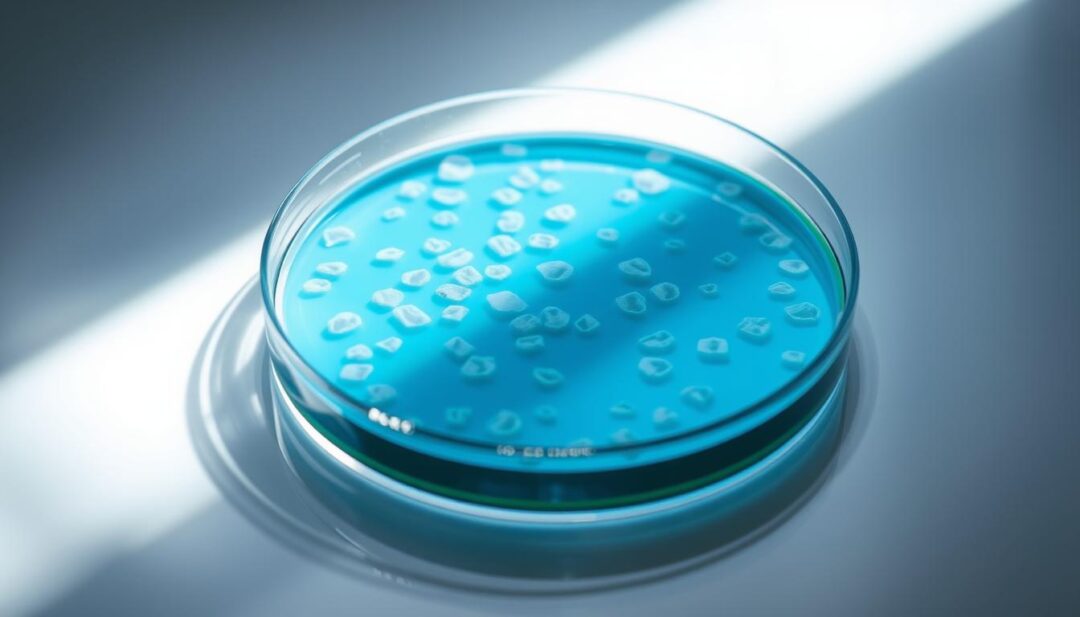
Prevention and Control Measures
To safeguard public health, it’s vital to implement robust prevention strategies against coliform bacteria. Effective prevention not only ensures the safety of drinking water but also protects recreational and aquatic environments.
Municipal Water Treatment
Municipal water treatment is a critical component in preventing coliform bacteria contamination. This involves several processes, including coagulation, sedimentation, filtration, and disinfection. Regular maintenance and monitoring of water treatment infrastructure are essential to prevent breaches in water safety.
According to the Environmental Protection Agency (EPA), municipalities can significantly reduce the risk of coliform bacteria contamination by implementing Continuous Disinfection Equipment and ensuring that water distribution systems are regularly inspected and maintained.
| Municipal Water Treatment Process | Effectiveness Against Coliform Bacteria |
|---|---|
| Coagulation and Sedimentation | High |
| Filtration | Very High |
| Disinfection | Extremely High |
Well Water Protection
For communities relying on well water, protection against coliform bacteria involves inspecting wells for defects and repairing them as needed. Constructing new wells with proper casing and sealing can also mitigate contamination risks.
“Proper well construction and maintenance are critical to preventing bacterial contamination. Regular inspections can identify potential issues before they become major problems.”
Home Filtration Systems
Home filtration systems can provide an additional layer of protection against coliform bacteria. Systems that include activated carbon, reverse osmosis, or ultraviolet (UV) light disinfection can be particularly effective.
When selecting a home filtration system, it’s crucial to choose one that is certified to remove bacteria and other pathogens. NSF International and similar organizations provide certification for water filtration systems, ensuring they meet certain standards.
Sanitation and Hygiene Practices
Good sanitation and hygiene practices are fundamental in preventing the spread of coliform bacteria. This includes proper disposal of human and animal waste, regular cleaning of surfaces that come into contact with water, and hygiene practices such as handwashing.
- Ensure proper disposal of waste to prevent contamination.
- Regularly clean and disinfect surfaces.
- Practice good hygiene, such as frequent handwashing.
By implementing these prevention and control measures, communities can significantly reduce the risk of coliform bacteria contamination, ensuring safer water for drinking, recreation, and other uses.
Conclusion
Coliform bacteria are a crucial indicator of water quality and environmental health. Understanding what are coliform bacteria? is essential for assessing the safety of drinking water, recreational water bodies, and overall ecosystem balance.
A coliform bacteria overview reveals their presence is not only a concern for human health but also an indicator of potential contamination sources. The significance of coliform bacteria lies in their ability to signal the presence of other pathogens, making them a vital component of water quality monitoring.
Effective prevention and control measures, such as municipal water treatment, well water protection, and proper sanitation practices, are critical in minimizing the risks associated with coliform bacteria. By understanding the role of these bacteria, communities can take proactive steps to ensure safer water sources.
Regular testing and monitoring for coliform bacteria are essential for maintaining public health and environmental integrity. By staying informed about coliform bacteria and their implications, individuals can contribute to broader efforts in protecting water resources and promoting a healthier environment.


